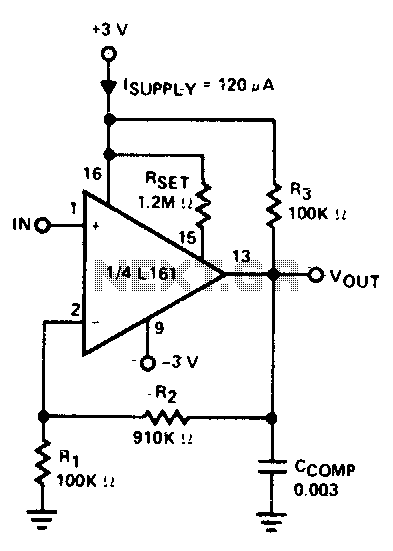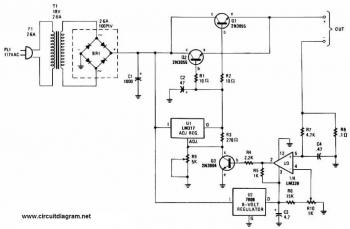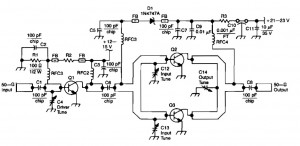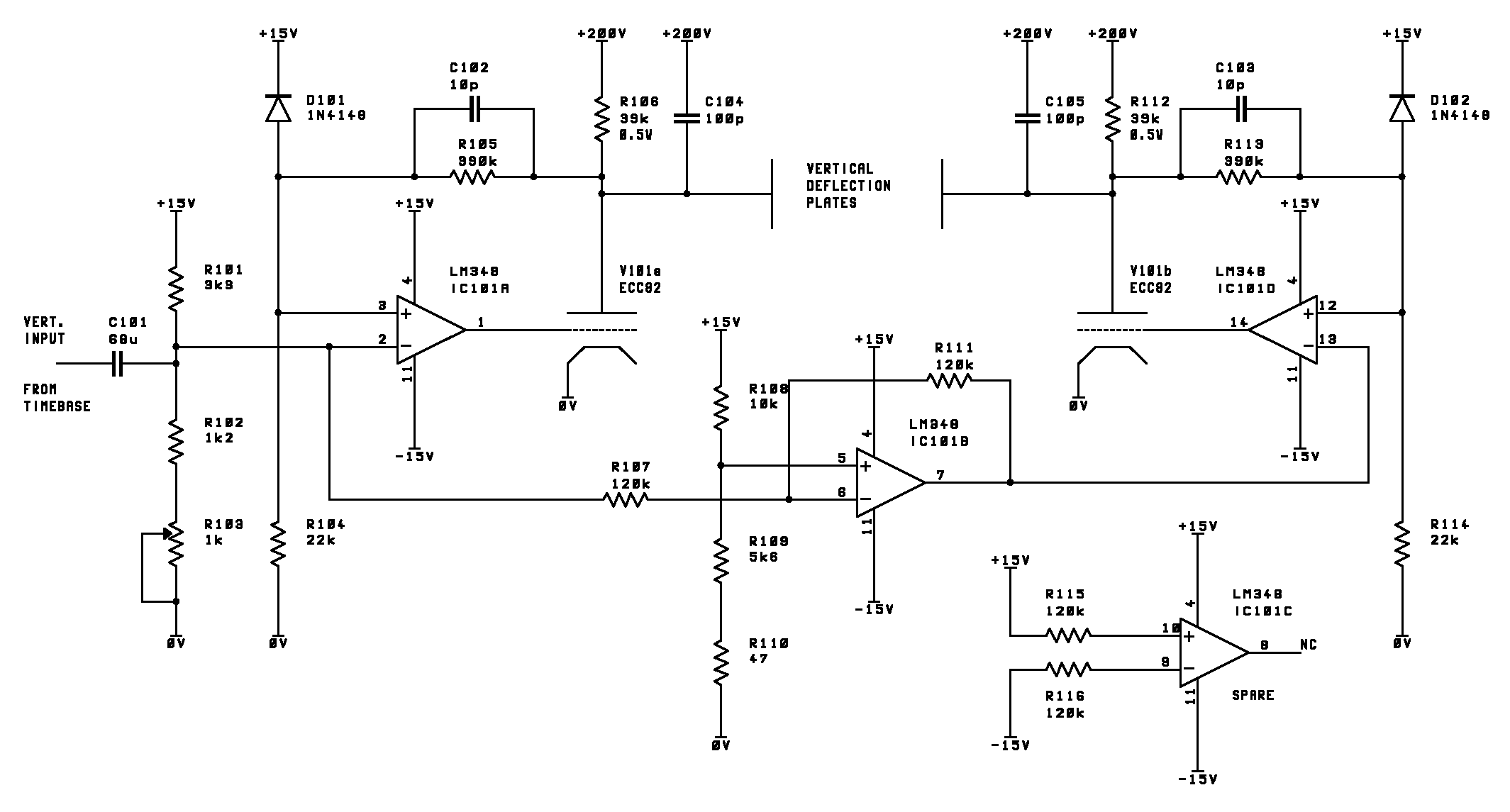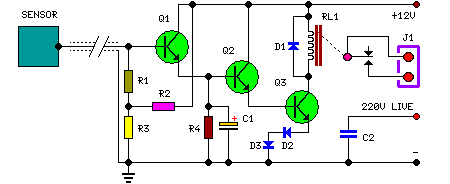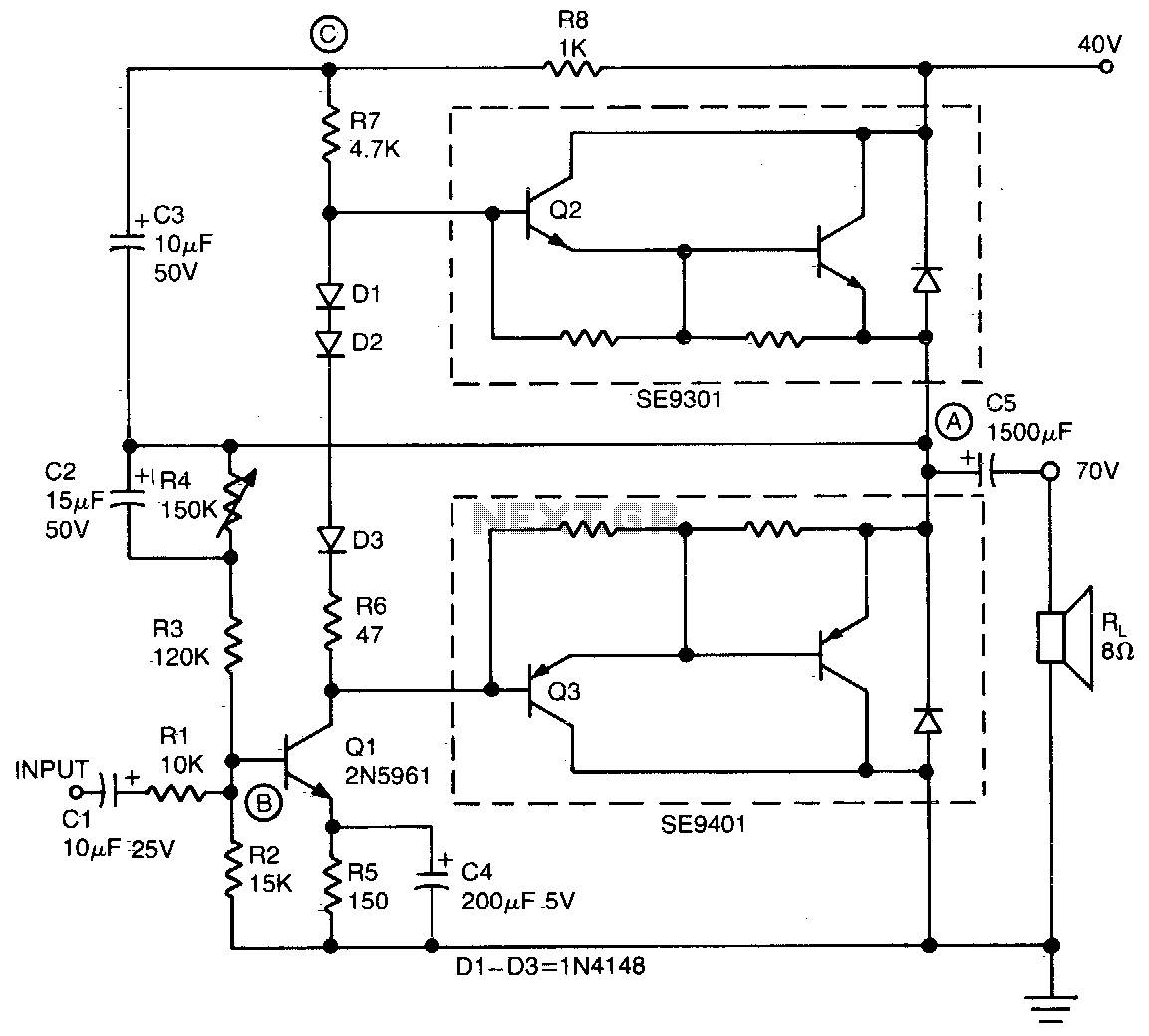
Differential amplifier circuit
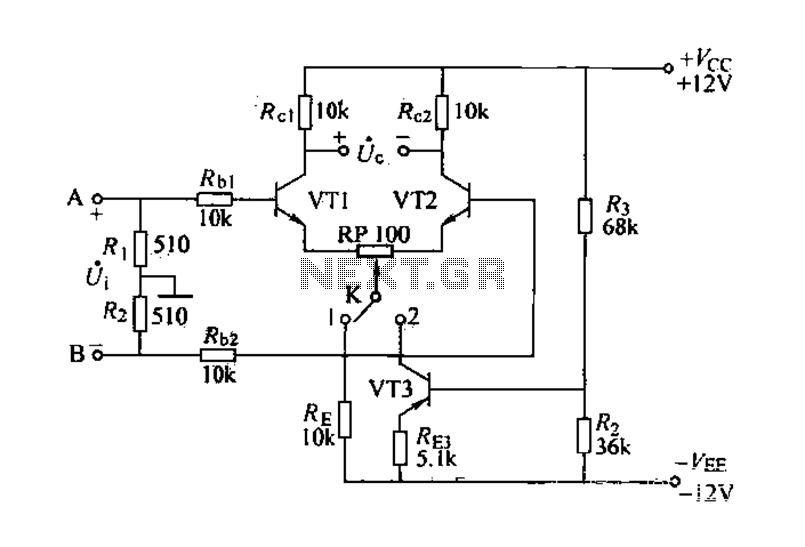
The differential amplifier is known for its stability and zero drift suppression. The circuit, as illustrated, utilizes two identical transistors, VT1 and VT2 (both 3DG6). The reference values for the component parameters are depicted in the figure. The circuit operates in two configurations: 1) When switch K is connected to the O end, it functions as a typical differential amplifier. The decay is adjusted using the potentiometer RP to set the quiescent operating point of VT1 and VT2, ensuring that the input signal (Ui) is zero and the double-ended output voltage (Ue) is also zero. The shared emitter resistor (RE) does not affect the differential mode voltage gain due to the absence of negative feedback for differential mode signals, but it provides strong negative feedback for common-mode signals, effectively suppressing zero drift and stabilizing the amplifier's quiescent point. 2) When switch K is connected to the other end, it creates a constant current source for the differential amplifier. A constant current source transistor (VT3) replaces the emitter resistance (RE), further enhancing the suppression capability for common-mode signals.
The differential amplifier is a critical component in analog signal processing, widely used for its ability to amplify the difference between two input signals while rejecting common-mode noise. The configuration begins with two matched transistors, VT1 and VT2, which are essential for maintaining balance and ensuring that both transistors operate under similar conditions. This matching is crucial for minimizing thermal drift and ensuring consistent performance across varying temperatures.
In the first configuration, when switch K is in the O position, the circuit is set up to operate as a standard differential amplifier. The quiescent point, or the DC operating point, is adjusted using the potentiometer RP, allowing for fine-tuning of the amplifier's response to input signals. The absence of negative feedback in the differential mode preserves the amplifier's gain characteristics, thus providing a high degree of sensitivity to differential signals. The shared emitter resistor (RE) plays a vital role in stabilizing the common-mode gain, which is critical in applications where noise rejection is paramount.
In the second configuration, with switch K in the alternate position, the circuit transforms into a constant current source. This is achieved by utilizing transistor VT3, which replaces the emitter resistor RE. By implementing a constant current source, the circuit gains improved performance in suppressing common-mode signals, which can be particularly beneficial in environments with significant electromagnetic interference. This enhancement is due to the constant current source providing a stable biasing condition, which minimizes variations in the output due to fluctuations in the supply voltage or temperature changes.
Overall, the design of this differential amplifier circuit emphasizes stability, precision, and the ability to effectively suppress unwanted noise, making it suitable for various applications in instrumentation, audio processing, and communication systems.Differential amplifier stability, zero drift suppression, is a common amplifier. Differential amplifier circuit shown in Figure, by two parameters identical transistors VT1, VT 2 (both 3DG6) components. Component parameter reference value as shown in FIG. Both circuits form is as follows: 1) When the switch K is connected when O end, put up a typical differential amplifier. Decay is used to adjust the potentiometer RP VT1, VT2 quiescent operating point, so that the input signal Ui o, double-ended output voltage Ue O.
RE for the two shared emitter resistor, its differential mode signal number no negative feedback effect, and thus does not affect the differential mode voltage gain, but for the common-mode signal has a strong negative feedback effect can be effectively suppressed zero drift system stable amplifier quiescent point. 2) When the switch K is connected end when constituting a constant current source of the differential amplifier.
A constant current source transistor VT3 employed to replace fat emitter resistance RE, the differential amplifier can be further improved co-suppression capability mode signal.
The differential amplifier is a critical component in analog signal processing, widely used for its ability to amplify the difference between two input signals while rejecting common-mode noise. The configuration begins with two matched transistors, VT1 and VT2, which are essential for maintaining balance and ensuring that both transistors operate under similar conditions. This matching is crucial for minimizing thermal drift and ensuring consistent performance across varying temperatures.
In the first configuration, when switch K is in the O position, the circuit is set up to operate as a standard differential amplifier. The quiescent point, or the DC operating point, is adjusted using the potentiometer RP, allowing for fine-tuning of the amplifier's response to input signals. The absence of negative feedback in the differential mode preserves the amplifier's gain characteristics, thus providing a high degree of sensitivity to differential signals. The shared emitter resistor (RE) plays a vital role in stabilizing the common-mode gain, which is critical in applications where noise rejection is paramount.
In the second configuration, with switch K in the alternate position, the circuit transforms into a constant current source. This is achieved by utilizing transistor VT3, which replaces the emitter resistor RE. By implementing a constant current source, the circuit gains improved performance in suppressing common-mode signals, which can be particularly beneficial in environments with significant electromagnetic interference. This enhancement is due to the constant current source providing a stable biasing condition, which minimizes variations in the output due to fluctuations in the supply voltage or temperature changes.
Overall, the design of this differential amplifier circuit emphasizes stability, precision, and the ability to effectively suppress unwanted noise, making it suitable for various applications in instrumentation, audio processing, and communication systems.Differential amplifier stability, zero drift suppression, is a common amplifier. Differential amplifier circuit shown in Figure, by two parameters identical transistors VT1, VT 2 (both 3DG6) components. Component parameter reference value as shown in FIG. Both circuits form is as follows: 1) When the switch K is connected when O end, put up a typical differential amplifier. Decay is used to adjust the potentiometer RP VT1, VT2 quiescent operating point, so that the input signal Ui o, double-ended output voltage Ue O.
RE for the two shared emitter resistor, its differential mode signal number no negative feedback effect, and thus does not affect the differential mode voltage gain, but for the common-mode signal has a strong negative feedback effect can be effectively suppressed zero drift system stable amplifier quiescent point. 2) When the switch K is connected end when constituting a constant current source of the differential amplifier.
A constant current source transistor VT3 employed to replace fat emitter resistance RE, the differential amplifier can be further improved co-suppression capability mode signal.
